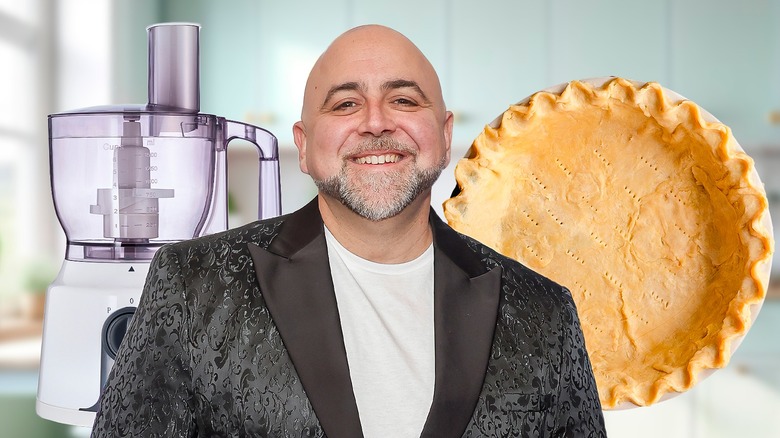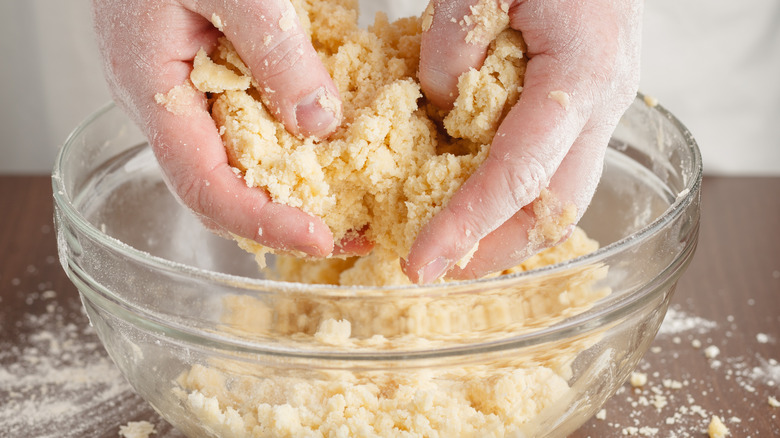Duff Goldman's Tip For Flawless Food Processor Pie Crust
Homemade pie pastry is notoriously tricky. But with a little guidance and one tip from celebrity pastry chef Duff Goldman, you can ensure your food processor pie crust will turn out flawlessly every time. In an exclusive interview with The Daily Meal, Goldman discussed his best tip for making pie crust — it's about finishing it by hand.
While the food processor reigns supreme for cutting cold — or even frozen — butter into flour, Goldman argues that adding water to the pie dough by hand is essential. "Don't put the water in the food processor, it'll ruin it," Goldman told The Daily Meal. "Yeah, do your water by hand, much better," he added.
Why eschew the convenience of the food processor for this crucial step? The answer lies in how water and flour combine in the appliance. While the food processor's sharp blades are perfect for cutting butter into flour, it's easy to add too much water when watching the dough come together in a food processor. This will make it sticky and tricky to work with. The food processor can also over-mix the dough in the blink of an eye when water is added, resulting in a less-than-ideal tough rather than flaky crust.
By introducing water by hand, you retain control and ensure the pastry is worked gently for optimal texture. This will help ensure that your pie crust recipe turns out flaky and light, just as you hope.
Use this technique to add the water by hand
To add water to the dough by hand, start by tipping ice-cold water into your flour and butter mixture only a tablespoon at a time. After each spoonful, gently work the flour mixture and water together with a fork or your fingertips. The key is restraint: Resist the urge to overwork the dough which creates a tough crust. You're aiming for a shaggy but cohesive mass that holds together when gently pressed.
As you add more water, observe the texture closely. Stop once the dough begins to clump together, remembering that it will firm up during chilling. Two tablespoons may well be enough. By maintaining a hands-on approach, you're attuned to the nuances of the dough.
Once your dough reaches the desired consistency and stays in a complete ball, wrap it tightly in plastic wrap and chill for at least an hour to rest. This time allows the butter to get cold again and the gluten to relax. If, when you roll the dough out, it begins to crack too much, add a teaspoon or two of water before folding it back together and refrigerating again.
So, skip store-bought pie crust and make it from scratch next time. Channel your inner pastry chef and embrace adding water by hand when you're next making a delicious apple pie. If Goldman recommends it, you know it's worth the extra time and effort.
Static Media owns and operates The Daily Meal and Tasting Table.

